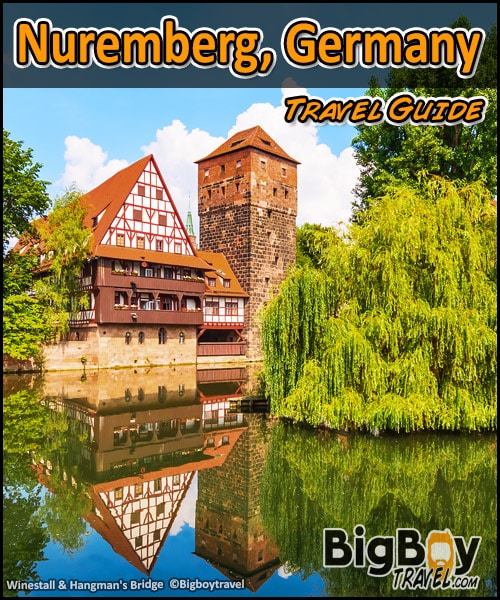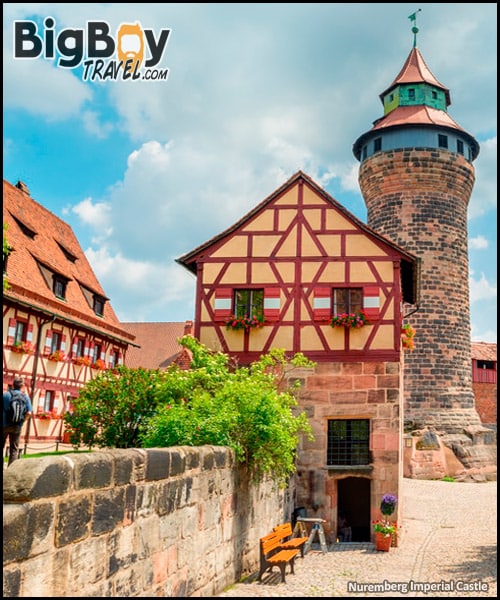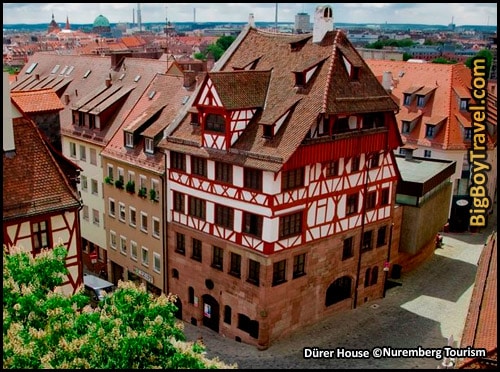Nuremberg (Nürnberg), Germany:
Settled In: Celts camped here as early as 400BC; first permanent fortifications 1000 AD
Officially Founded: 1050 AD, Free Imperial City in 1219 AD, joined Bavaria in 1806
Language: German, but basic English gets you by.
Suggested Stay: 2 Full Days with an overnight stay
Overview of Nuremberg:
Only an hour North of Munich by train, the beautiful city of Nuremberg (Nürnberg) sits on an important Medieval trade route called Castle Road. While it was overshadowed by nearby Rothenburg early on, Nuremberg blossomed from 1400-1600 (the German Renaissance) to become one of the coolest cities in the Middle Ages.
The compact city center is truly a delight even if you only have one day to visit. Don’t be confused by all of the spellings of Nuremberg which is listed as Nürnberg in German but also commonly misspelled as Nurenberg or Nuremberg. Our guide covers many visitor tips like this, to help make sure you enjoy your visit to Nuremberg Germany!
History of Nuremberg:
The city was often called the ‘unofficial capital’ of the Holy Roman Emperor in Medieval times because Nuremberg was where many rulers wanted to go every chance they got and (as of 1356) is where they had to hold their first Imperial Diet. The desire to travel to Nuremberg stemmed from the city’s beautiful and strong fortifications. The hilltop Nuremberg Castle and mighty wall circling the entire town made the Imperial City a Medieval force. Our Nuremberg travel guide will take you to the castle and around many other historical sights.
During WW2, Nuremberg became a Nazi stronghold which led to the bombing of many of the Medieval sites around town. The village was later where many of the Nazi leaders famously went on trial after the war was over. City a population of over 3 million people, the core of Old Town Nuremberg has been tastefully restored since the war to keep the Medieval vibe alive.








